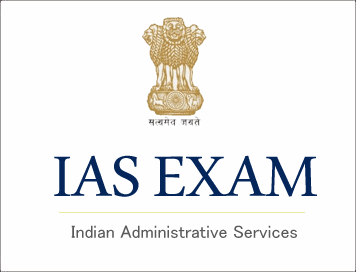UPSC IAS (Pre.) Exam 2020 Notification Released
1. CANDIDATES TO ENSURE THEIR ELIGIBILITY FOR THE EXAMINATION:
All candidates (male/female/transgender) are requested to carefully read the Rules of Civil Services Examination notified by the Government (Department of Personnel and Training) and this Notice of Examination derived from these Rules. The Candidates applying for the examination should ensure that they fulfill all eligibility conditions for admission to examination. Their admission to all the stages of the examination will be purely provisional subject to satisfying the prescribed eligibility conditions. Mere issue of e-Admit Card to the candidate will not imply that his/her candidature has been finally cleared by the Commission. The Commission takes up verification of eligibility conditions with reference to original documents only after the candidate has qualified for Interview/Personality Test.
2. HOW TO APPLY:
Candidates are required to apply Online by using the website https://upsconline.nic.in Detailed instructions for filling up online applications are available on the above mentioned website. Brief Instructions for filling up the "Online Application Form" given in Appendix-IIA.
Candidate should have details of one Photo ID Card viz. Aadhaar Card/Voter Card/PAN Card/Passport/Driving Licence/Any other Photo ID Card issued by the State/Central Government. The details of this Photo ID Card will have to be provided by the candidate while filling up the online application form. The candidates will have to upload a scanned copy of the Photo ID whose details have been provided in the online application by him/her. This Photo ID Card will be used for all future referencing and the candidate is advised to carry this Photo ID Card while appearing for Examination/Personality Test.
The facility of withdrawal of Application is available for those candidates who do not want to appear for Civil Services (Preliminary) Examination. In this regard, Instructions are mentioned in Appendix IIB of this Examination Notice.
3. LAST DATE FOR RECEIPT OF APPLICATIONS :
The online Applications can be filled up to 3rd March, 2020 till 6:00 PM. The eligible candidates shall be issued an e-Admit Card three weeks before the commencement of the examination. The e-Admit Card will be made available in the UPSC website [https://upsconline.nic.in] for downloading by candidates. No Admit Card will be sent by post.
UPSC PRE EXAM DATE: 31st MAY 2020 (SUNDAY)
4. PENALTY FOR WRONG ANSWERS:
Candidates should note that there will be penalty (negative marking) for wrong answers marked by a candidate in the Objective Type Question Papers.
5. FACILITATION COUNTER FOR GUIDANCE OF CANDIDATES:
In case of any guidance/information/clarification regarding their applications, candidature etc. candidates can contact UPSC’s Facilitation Counter near gate ‘C’ of its campus in person or over Telephone No. 011-23385271/011-23381125/011-23098543 on working days between 10.00 hrs and 17.00 hrs.
F. No. 1/6/2019-E.I(B) : Preliminary Examination of the Civil Services Examination for recruitment to the Services and Posts mentioned below will be held by the Union Public Service Commission on 31st May, 2020 in accordance with the Rules published by the Department of Personnel & Training in the Gazette of India Extraordinary dated 12th February, 2020.
(i) Indian Administrative Service.
(ii) Indian Foreign Service.
(iii) Indian Police Service.
(iv) Indian P & T Accounts & Finance Service, Group ‘A’.
(v) Indian Audit and Accounts Service, Group ‘A’.
(vi) Indian Revenue Service (Customs and Central Excise), Group ‘A’.
(vii) Indian Defence Accounts Service, Group ‘A’.
(viii) Indian Revenue Service (I.T.), Group ‘A’.
(ix) Indian Ordnance Factories Service, Group ‘A’ (Assistant Works Manager, Administration).
(x) Indian Postal Service, Group ‘A’.
(xi) Indian Civil Accounts Service, Group ‘A’.
(xii) Indian Railway Traffic Service, Group ‘A’.
(xiii) Indian Railway Accounts Service, Group 'A'.
(xiv) Indian Railway Personnel Service, Group ‘A’.
(xv) Post of Assistant Security Commissioner in Railway Protection Force, Group ‘A’
(xvi) Indian Defence Estates Service, Group ‘A’.
(xvii) Indian Information Service (Junior Grade), Group ‘A’.
(xviii) Indian Trade Service, Group 'A'.
(xix) Indian Corporate Law Service, Group ‘A’.
(xx) Armed Forces Headquarters Civil Service, Group ‘B’ (Section Officer’s Grade).
(xxi) Delhi, Andaman & Nicobar Islands, Lakshadweep, Daman & Diu and Dadra & Nagar Haveli
Civil Service, Group 'B'.
(xxii) Delhi, Andaman & Nicobar Islands, Lakshadweep, Daman & Diu and Dadra & Nagar Haveli
Police Service, Group 'B'.
(xxiii) Pondicherry Civil Service, Group 'B'.
(xxiv) Pondicherry Police Service, Group ‘B’

The number of vacancies to be filled through the examination is expected to be approximately 796 which include 24 vacancies reserved for Persons with Benchmark Disability Category, i.e. 3 vacancies for candidates of (a) blindness and low vision; 9 Vacancies for (b) deaf and hard of hearing; 8 Vacancies for (c) locomotor disability including cerebral palsy, leprosy cured, dwarfism, acid attack victims and muscular dystrophy; and 4 Vacancies for (e) multiple disabilities from amongst persons under clauses (a) to (c) including deaf-blindness. The final number of vacancies may undergo change after getting firm number of vacancies from Cadre Controlling Authorities. Reservation will be made for candidates belonging to Scheduled Castes. Scheduled Tribes, Other Backward Classes, the Economically Weaker Sections and Persons with Benchmark Disability in respect of vacancies as may be fixed by the Government. As per the decision taken by the Government for increasing the access of unemployed to job opportunities, the Commission will publicly disclose the scores of the candidates (obtained in the Written Examination and Interview/Personality Test) through the public portals. The disclosure will be made in respect of only those willing candidates who will appear in the Interview/Personality Test for the Civil Service Examination and are not finally recommended for appointment. The information shared through this disclosure scheme about the non-recommended candidates may be used by other public and private recruitment agencies to appoint suitable candidates from the information made available in the public portal. Candidates will be required to give their options at the time of Interview/Personality Test, while downloading the e-Summon Letter from the Commission’s website for the interview. A candidate may opt out of the scheme also and in that case his/her details will not be published by the Commission.
Besides sharing of the information of the non-recommended willing candidates of this examination, the Commission will not assume any responsibility or liability for the method and manner in which information related to such candidates is utilized by public/private organizations.
3. Eligibility Conditions: (I) Nationality
-
For the Indian Administrative Service, the Indian Foreign Service and the Indian Police Service, a candidate must be a citizen of India.
-
For other services, a candidate must be either:-
-
a citizen of India, or
-
a subject of Nepal, or
-
a subject of Bhutan, or
-
a Tibetan refugee who came over to India before 1st January, 1962 with the intention of permanently settling in India, or
-
a person of Indian origin who has migrated from Pakistan, Burma, Sri Lanka, East African countries of Kenya, Uganda, the United Republic of Tanzania, Zambia, Malawi, Zaire, Ethiopia and Vietnam with the intention of permanently settling in India. Provided that a candidate belonging to categories (b), (c), (d) and (e) shall be a person in whose favour a certificate of eligibility has been issued by the Government of India.
A candidate in whose case a certificate of eligibility is necessary, may be admitted to the examination but the offer of appointment may be given only after the necessary eligibility certificate has been issued to him/her by the Government of India.
(II) Age Limits:
(a) A candidate must have attained the age of 21 years and must not have attained the age of 32 years on the 1st of August, 2020 i.e., he must have been born not earlier than 2nd August, 1988 and not later than 1st August, 1999. Necessary action to make corresponding changes in respective Rules/Regulations pertaining to various services is being taken separately.
(b) The upper age-limit prescribed above will be relaxable:
(i) up to a maximum of five years if a candidate belongs to a Scheduled Caste or a Scheduled Tribe;
(ii) up to a maximum of three years in the case of candidates belonging to Other Backward Classes who are eligible to avail of reservation applicable to such candidates;
(iii) up to a maximum of three years in the case of Defence Services Personnel, disabled in operations during hostilities with any foreign country or in a disturbed area and released as a consequence thereof;
(iv) up to a maximum of five years in the case of ex-servicemen including Commissioned Officers and ECOs/SSCOs who have rendered at least five years Military Service as on 1st August, 2020 and have been released;
(a) on completion of assignment (including those whose assignment is due to be completed within one year from 1st August, 2020 otherwise than by way of dismissal or discharge on account of misconduct or inefficiency; or
(b) on account of physical disability attributable to Military Service; or
(c) on invalidment.
(v) up to a maximum of five years in the case of ECOs/SSCOs who have completed an initial period of assignment of five years of Military Service as on 1st August, 2020 and whose assignment has been extended beyond five years and in whose case the Ministry of Defence issues a certificate that they can apply for civil employment and that they will be released on three months’ notice on selection from the date of receipt of offer of appointment.
(vi) up to a maximum of 10 years in the case of (a) blindness and low vision; (b) deaf and hard of hearing; (c) locomotor disability including cerebral palsy, leprosy cured, dwarfism, acid attack victims and muscular dystrophy; (d) autism, intellectual disability, specific learning disability and mental illness; and (e) multiple disabilities from amongst persons under clauses (a) to (d) including deaf-blindness.
(III) Minimum Educational Qualifications :
The candidate must hold a degree of any of Universities incorporated by an Act of the Central or State Legislature in India or other educational institutions established by an Act of Parliament or declared to be deemed as a University Under Section-3 of the University Grants Commission Act, 1956, or possess an equivalent qualification
Note I:—Candidates who have appeared at an examination the passing of which would render them educationally qualified for the Commission’s examination but have not been informed of the result as also the candidates who intend to appear at such a qualifying examination will also be eligible for admission to the Preliminary Examination. All candidates who are declared qualified by the Commission for taking the Civil Services (Main) Examination will be required to produce proof of passing the requisite examination along with their application (i.e. Detailed Application Form-I) for the Main Examination, failing which
such candidates will not be admitted to the Main Examination. Such proof of passing the requisite examination should be dated earlier than the due date (closing date) of Detailed Application Form-I of the Civil Services (Main) Examination.
Note II: In exceptional cases the Union Public Service Commission may treat a candidate who does not have any of the foregoing qualifications as a qualified candidate provided that he/she has passed examination conducted by the other Institutions, the standard of which in the opinion of the Commission justifies his/her admission to the examination.
Note III: Candidates possessing professional and technical qualifications which are recognised by the Government as equivalent to professional and technical degree would also be eligible for admission to the examination.
Note IV: Candidates who have passed the final professional M.B.B.S. or any other Medical Examination but have not completed their internship by the time of submission of their applications for the Civil Services (Main) Examination, will be provisionally admitted to the Examination provided they submit along with their application a copy of certificate from the concerned authority of the University/Institution that they had passed the requisite final professional medical examination. In such cases, the candidates will be required to produce at the time of their interview original Degree or a certificate from the concerned competent authority of the University/Institution that they had completed all requirements (including completion of internship) for the award of the Degree
4. FEE:
Candidates (excepting Female/SC/ST/Persons with Benchmark Disability Candidates who are exempted from payment of fee) are required to pay fee of Rs. 100/- (Rupees One Hundred only) either by remitting the money in any Branch of State Bank of India or by using Visa/Master/RuPay Credit/Debit Card or by using Internet Banking of SBI. Applicants who opt for "Pay by Cash" mode should print the system generated Pay-in-slip during part II registration and deposit the fee at the counter of SBI Branch on the next working day only. "Pay by Cash” mode will be deactivated at 11.59 P.M. of 02.03.2020 i.e. one day before the closing date; however applicants who have generated their Pay-in- Slip before it is deactivated may pay at the counter of SBI Branch during banking hours on the closing date. Such applicants who are unable to pay by cash on the closing date i.e. during banking hours at SBI Branch, for reasons whatsoever, even if holding valid pay-in-slip will have no other offline option but to opt for available online Debit/Credit Card or Internet Banking payment mode on the closing date i.e. till 18:00 Hours of 03.03.2020.
For the applicants in whose case payments details have not been received from the bank they will be treated as fictitious payment cases and a list of all such applicants shall be made available on the Commission website within two weeks after the last day of submission of online application.These applicants shall also be intimated through e-mail to submit copy of proof of their payment to the Commission at the address mentioned in the e-mail. The applicant shall be required to submit the proof within 10 days from the date of such communication either by hand or by speed post to the Commission. In case, no response is received from the applicants their applications shall be summarily rejected and no further correspondence shall be entertained in this regard. All female candidates and candidates belonging to Scheduled Caste/ Scheduled Tribe/ Persons with Benchmark Disability categories are exempted from payment of fee. No fee exemption is, however, available to OBC/EWS candidates and they are required to pay the prescribed fee in full. Persons with Benchmark Disability are exempted from the payment of fee provided they are otherwise eligible for appointment to the Services/Posts to be filled on the results of this examination on the basis of the standards of medical fitness for these Services/Posts (including any concessions specifically extended to the Persons with Benchmark Disability). A candidate of Persons with Benchmark Disability claiming fee concession will be required by the Commission to submit along with their Detailed Application Form - I, a certified copy of the Certificate of Disability from a Government Hospital/Medical Board in support of his/her claim for belonging to Persons with Benchmark Disability.
NB: Notwithstanding, the aforesaid provision for fee exemption, a candidate of Persons with Benchmark Disability will be considered to be eligible for appointment only if he/she (after such physical examination as the Government or the Appointing Authority, as the case may be, may prescribe) is found to satisfy the requirements of physical and medical standards for the concerned Services/Posts to be allocated to candidates of Persons with Benchmark Disability by the Government.
Note I: Applications without the prescribed Fee (Unless remission of Fee is claimed) shall be summarily rejected.
Note II: Fee once paid shall not be refunded under any circumstances nor can the fee be held in reserve for any other examination or selection.
Note III: If any candidate who took the Civil Services Examination held in 2019 wishes to apply for admission to this examination, he/she must submit his/her application without waiting for the results or an offer of appointment.
Note IV: Candidates admitted to the Main Examination will be required to pay a further fee of Rs. 200/- (Rupees Two hundreds only).










